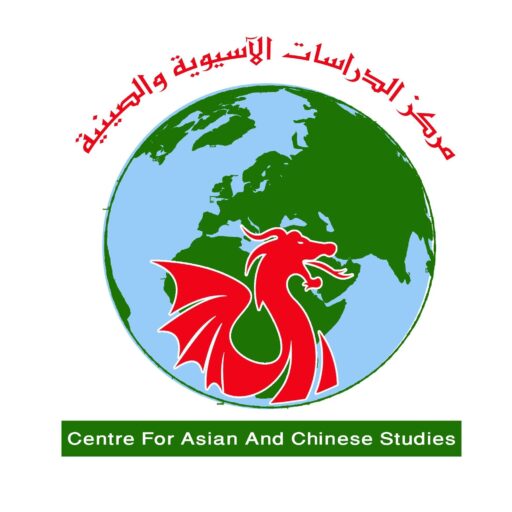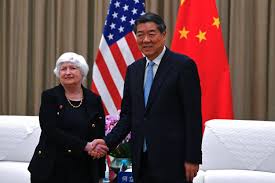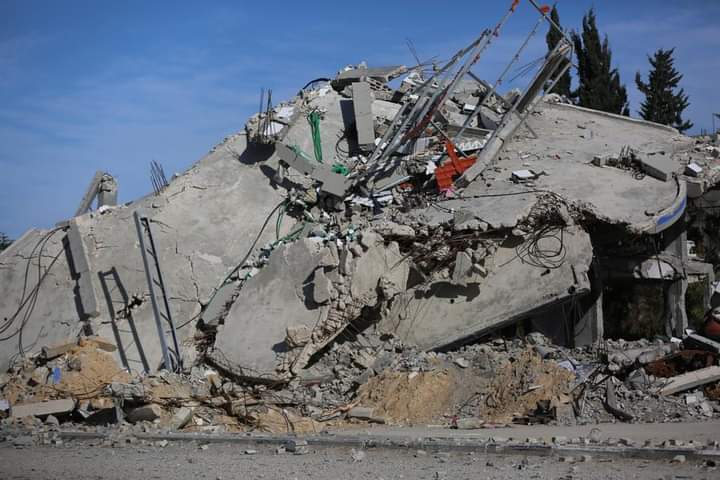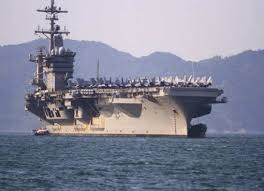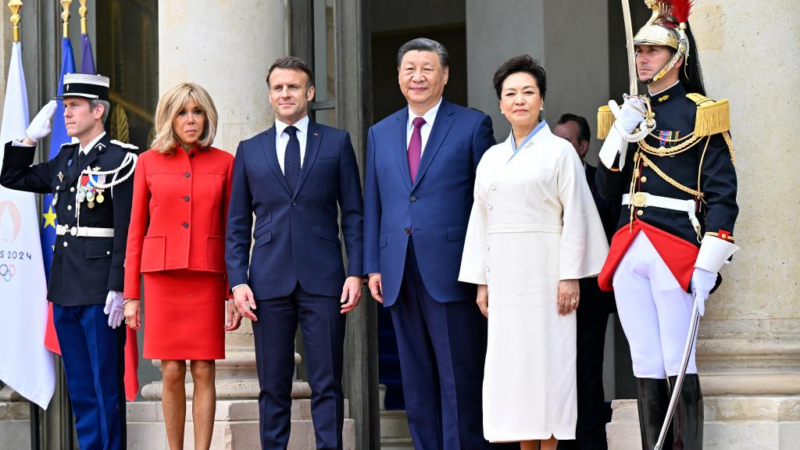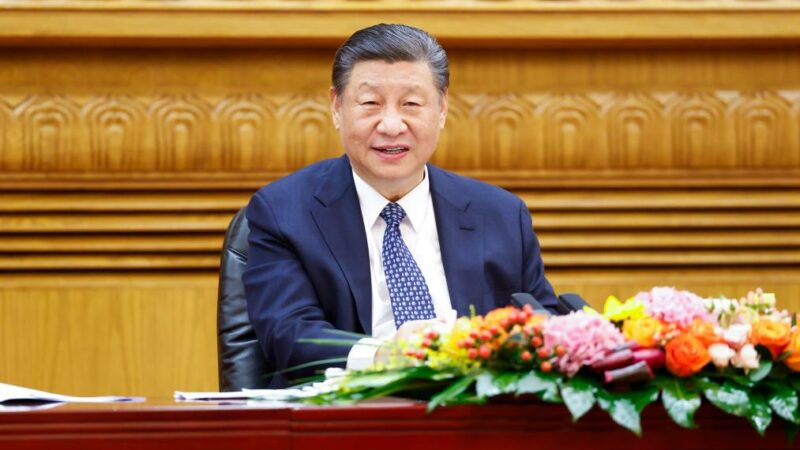US and China: Politcs or Plots

By Elias Farhat*/
On March 19, 2021, during the inauguration of talks between the US and China which was the first such event held by the Biden administration, instead of welcoming the Chinese delegation on American soil in Anchorage Alaska, Secretary of State Antony Blinken started a blunt opening statement before the talks in private, saying that the US would “discuss our deep concerns with actions by China, including in Xinjiang, Hong Kong, Taiwan, cyber-attacks on the United States, economic coercion of our allies. Each of these actions threatens the rules-based order that maintains global stability”.
In response, the senior foreign policy official in the Chinese Communist Party, Mr. Yang Jiechi, accused Washington of using its military might and financial supremacy to suppress other countries.
“It abuses so-called notions of national security to obstruct normal trade exchanges, and incite some countries to attack China,” he added.
Mr. Yang said human rights in the US were at a low point, with black Americans being “slaughtered”.
It was a bad start-up for the Biden administration. The Chinese were angry with the US which had imposed sanctions on them the day before talks, over what they described as a crackdown on pro-democracy advocates in Hong Kong.
These talks caused more tensions when they should have sought to ease the tension caused by Trump’s administration. Trump imposed sanctions on US neighbors in Canada and Mexico, on friends in the European Union, and opponents in Russia and China. Furthermore, reminding the world of the former Berlin wall, Trump started constructing a separation wall along the line of borders with Mexico.
The Biden administration did not seem concerned with removing Trump’s harmful measures on international relations. Instead, they used them as a basis for confrontation with the international community.
The US resumed the use of weapons of the cold war, mainly exploiting the mass media over alleged human rights violations and using them in shaping foreign policy.
The US diplomacy and media along with other western media launched a campaign against China under the known pretext of defending human rights and freedom. They are concentrating their offensive on what is going on in Xingjiang with the Uyhgure Muslim minority and disparaging all Chinese measures taken to develop that region. They are urging Muslims all over the world to gather their support for their Muslim brothers in China. This propaganda is not directed only at the ordinary Muslim or Muslim states, but it is rather directed at the Islamic militants as Alqaeda and its affiliated groups as well as ISIS. It is an invitation for militants to launch terrorist attacks against China.
When did the US start using human rights and democracy to shape its foreign policy?
Back in the seventies of the twentieth century and definitely when former president Jimmy Carter was in office (1976-1980), the US started a process to change the “look” of its foreign policy which was tarnished by waging direct wars as in Vietnam and East Asia or proxy wars as in the middle east and Latin America and others. US Armed forces committed atrocities, destroyed countries, and killed people in those wars. That was subject to opposition from many civil rights organizations all over the world and in the US itself. The then-President Carter claimed that he would make human rights a key part of American foreign policy. Early in his presidency, he explained that U.S. support for human rights involved promoting “human freedom” worldwide and protecting “the individual from the arbitrary power of the state.” This approach risked straining relations with friends and widening existing rifts with foes.
So, the US media machine and its followers around the world forgot about the US Armed Forces’ violation of human rights and started looking for incidents and forging fake news to accuse their adversaries of violating human rights, thus finding a moral excuse on which to build their foreign policy upon.
The Carter administration and administrations that followed it continued to support despots and monarchies who persecuted their people under the pretext that they are allied to the US. In Latin America, they supported or turned a blind eye to massacres committed by their despot allies in Salvador, Nicaragua, and Chili. In the Middle East, they supported the Israeli apartheid regime which still occupies the land of neighboring Arab countries and prevents the return of the Palestinian refugees to their homeland according to the UN Security Council resolution 242 and the General Assembly resolution 194. Also, the US vetoed many draft resolutions to condemn Israeli massacres committed in Egypt, Syria, Lebanon, and Palestinian territories.
The only motive for the US was its interests and it was never acted ethically or based on human rights.
Even inside the US, people suffered from racial discrimination, poverty, violence, organized crime, and the absence of social security. Although the US-dominated the world economy and influenced world trade and business, it did not use its economic power to reduce domestic troubles and resolve its ongoing social and economic crisis.
In 1963 former president John Kennedy was shot dead by a sniper while riding his car in Dulles Texas. The suspected assassin Lee Harvey Oswald was surprisingly killed while being transferred to a country jail and escorted by security forces. Some have poised that the killer Jack Ruby was part of a larger conspiracy concerning Kennedy s assassination. The US people, along with the world public, could not solve this crime which turned to be a national and international enigma.
Civil rights activists were persecuted by the police and security forces. Martin Luther King Jr., a black and civil rights leader was assassinated leaving a deep wound in the hearts and minds of the black Americans and the majority of the people of America.
In 2007 a book was published in the US, Legacy of Ashes by Tim Weiner, a former agent in the CIA. It is a record of the US secret operations during the cold war era and includes shocking revelations of meddling in the internal affairs of many countries around the world using violence, assassinations, organizing coups d’etat, changing regimes, causing rifts inside countries, and sparking civil wars in Indonesia, Iran, Latin America, Africa, and other countries. The Wall Street Journal said: Legacy of Ashes should be a must-read for every presidential candidate. It is clear whether this is a recommendation to avoid or to follow what is written in that book.
While the US and the west were occupied by dominating the world, and the US, the only international pole controlling the world economy and security, China in the late twentieth century was working hard to develop its economy, raise the standard of living of the Chinese people and alleviate poverty. The beginning was from the infrastructure and agriculture to secure food for all people and pave the way for industry and business. Soon the industry accelerated and the country became at the top of the industrial countries in the world. The economy grew fast and reached a growth rate of 12%. Some of the main concerns of the Chinese government were developing the rural areas and the countryside, reforming the economy, and building infrastructure and an education system.
Xingjiang in North China was one of these territories that needed to develop after it had witnessed riots and terrorist attacks that destabilized the region.
Xinjiang is an important link in China’s Belt and Road Initiative, a massive development plan stretching through Asia and Europe launched by Chinese president Xi Jinping. Beijing hopes to eradicate any possibility of separatist activity to preserve the unity of the region and the country and to continue its development. This region is home to China’s largest coal and natural gas reserves.
The climate of Xinjiang is ideally suited for growing cotton and the region accounts for up to 20% of global production. The industry was once a huge employer but in recent years the harvest has become more mechanized.
In recent years before 2017, ethnic separatists, religious extremists, and those influenced by extremism launched over 100 terrorist attacks in Xinjiang, killing and injuring hundreds of police officers and innocent people. This was done due to the effect of the US and western campaigns to urge Muslim militants to act violently against their state and society as they have done in Iraq, Syria, North and West Africa, and other countries. Chinese security forces intervened and sacrificed to restore security and peace at home and brought all the culprits to justice. The government and the local authorities ensured the freedom of religious practice and human rights for all people of the region. The Chinese government set a plan for the human and economic development of the region and continued the country’s counter-terrorism and de-radicalization measures including setting up vocational education and training centers.
The background of setting up the vocational education and training centers is that Xinjiang, at the hinterland of Asia, borders with eight countries, some of which are seriously threatened by violent terrorist activity (in central Asia Muslim countries). Such activities also impact Xinjiang. Under such circumstances, the setting up of the vocational education and training centers represents an exploration to save those involved in minor violations of the law and eliminate sources of terrorism.
These centers deliver a curriculum that includes an understanding of the law, standard spoken and written Chinese, how to launch normal religious activities as well as vocational skills.
Trainees will receive certificates of completion when they reach the expected criteria. Most trainees have now returned home, and over 90 percent of the trainees who graduated from these centers went on to secure stable jobs and are earning a decent income.
The purpose of vocational training is to give students the skills and hands-on experience needed to work in a specific job. It can begin from high school and can also be done when a student is a graduate. It includes studying academics, studying major courses, and introducing students to the various trade forms such as business, construction, art and crafts, agriculture, health studies, and information technology.
The Chinese government issued a white paper on Xingjiang which includes: “vocational training is increasing job opportunities and combating poverty.
“Xinjiang has built a large knowledge-based, skilled, and innovative workforce that meets the requirements of the new era”.
“The training provided includes labor skills and knowledge of urban life. People from rural areas have started their businesses or got jobs in factories after receiving state support.”
For four years now, no terrorist attack has been reported and the Xingjiang region enjoys peace and stability with people exercising normal life in their jobs and Muslims practicing prayer in many Mosques, most of which were newly built.
Recently, Beijing has come under fire from a network of US and international media defaming the accomplishment in Xinjiang. Some anti-China forces have said that through the institution of “forced labor” and the poverty alleviation program, tens of millions of ethnic minority workers have been forced to pick cotton with their hands.
.
Many clothing brands and multinational companies as H&M and Nike, and fashion retailer Burberry members of international BCI(Better Cotton Initiative) announcd they would not source cotton from the region after they expressed concern about alleged forced and human rights abuse in the region. They faced Chinese consumer backlash and some big e-commerce platforms removed those brands as did the Chinese Android app.
China’s branch of the global trade body BCI says it has not found signs of forced labor in Xinjiang province.
China welcomes foreigners to visit Xinjiang. Many ambassadors to China and foreign journalists have been invited to the region to visit and interview, and they hold almost the same opinion about this place – that what they saw there was completely different from what they had heard in the reports by western media.
50 ambassadors at the UN in Geneva sent a joint letter to the UN’s Human Rights Council, speaking highly of China’s achievements in human rights development and commending the country’s counter-terrorism and de-radicalization measures, including setting up vocational education and training centers.
They mentioned that safety and security have returned to Xinjiang and the fundamental human rights of people of all ethnic groups there are safeguarded.
Foreign journalists who physically went to Xinjiang were also objective. Some published reports after visiting Xinjiang.
“We visited Urumqi, Kashgar, Aksu, Hotan, and other regions and cities in Xinjiang, and we were accompanied by English, Russian, Turkish, and Japanese interpreters,” Journalist Dalimovich from Uzbekistan wrote.
“We were told to have free conversations with any officials or trainees at the centers, for as long as we wanted,” he added.
Some media outlets promoted fake and inappropriate news about Xingjiang such as the Chinese authorities have since 2017 been sending men to live with Uyghur women, many of whose husbands had been sent to prison camps. This is an example of fake news which some western media outlets have circulated.
On the political level, the US, Britain, and Canada imposed sanctions on some individuals and entities in Xinjiang. The government of China’s Xinjiang Uyghur Autonomous Region issued a statement condemning these unilateral, unjustifiable sanctions.
According to the statement, the sanctions gravely violated international law and basic norms governing international relations. They have seriously interfered in China’s internal affairs and fully exposed the sinister intentions of these countries to disrupt the stability and development of Xinjiang.
The regional government denied human rights issues in Xinjiang and urged the three countries to “stop political manipulation and double standards on human rights issues.
As of the beginning of 2021, the US officially started a political
campaign against China. The State Department declared on Jan. 19th, 2021 that the Chinese government is committing genocide and crimes against humanity through its wide-scale repression of Uyghurs and other predominantly Muslim ethnic minorities in its northwestern region of Xinjiang, including in its use of internment camps and forced sterilization.
This move was the Trump administration’s final action on China made on its last full day, and is the culmination of a years-long debate over how to punish what many consider to be Beijing’s worst human rights abuses in decades.
U.S. Secretary of State Antony Blinken said in a statement ahead of meetings with EU and NATO ministers in Brussels this week (April 2021) that China continues to commit genocide and crimes against humanity in Xinjiang. In a joint measure against China, the United States, the European Union, Britain, and Canada imposed sanctions on Chinese officials for human rights abuses in Xinjiang, the first such coordinated Western action against Beijing under new U.S. President Joe Biden.
The rifts reached an unprecedented degree and the government of China hit back at the US. It has accused Washington of hypocrisy for criticizing its mass internment campaign in the western Xinjiang region, claiming that many people held in the predominantly Muslim area had now “graduated” from what it called a counter-terrorism indoctrination program. Beijing also hit back immediately with punitive measures against the EU that appeared broader, including European lawmakers, diplomats, institutes, and families, and banning their businesses from trading with China. Unlike the conventional views that the west only punishes and imposes sanctions and other countries are just receivers and are obliged to give in, this Chinese step proves how confident and brave the Chinese government is.
It also reflects the new balance of power which some in the west still do not admit in their insistence on living in the colonial past.
Former US Army Colonel Lawrence Wilkerson( former chief of staff of former secretary of state Colin Powell) held a discussion at the Ron Paul Institute’s Washington Conference in August 2018.
Wilkerson spoke about the purposes of the U.S. military stationed in Afghanistan. One of the purposes stated is to contain China. In his speech, Wilkerson admitted the U.S. plots to create unrest in China’s Xinjiang Uyghur Autonomous Region by using the 20 million Uyghurs to push the Han Chinese and Beijing and eventually collapse the country from the inside. He said in a video on social media:” because there are 20 million Uyghurs and if the CIA has to mount an operation using those Uyghurs as Erdogan has done in Turkey against Assad, well the CIA would want to destabilize China and that would be the best way to do it to form unrest and to join those Uyghur in pushing the Han Chinese from the internal.”
Chinese Foreign Ministry responded by a press conference. The spokesperson, Hua Chunying, pointed out that the so-called Uyghur issue is another show plotted by the US to destabilize and contain China.
According to Hua, the U.S. plotted the invasion of Iraq by claiming that Iraq had weapons of mass destruction (WMD) in 2003. While the claim was overturned by the U.S. itself, who acknowledged that the so-called evidence of WMD is merely laundry powder.
The same scenario was played again in Syria in 2018 where the U.S. and its allies accused Syria of using chemical weapons and launched airstrikes on the country in response. Hua then said that the CIA and the National Endowment for Democracy (NED) also funded and directly participated in the rioting and turbulence in China’s Hong Kong Special Administrative Region in 2019 with an attempt to launch a “colored revolution” in the city.
This evidence is very clear and reveals the intentions of the foreign policy planners in the US towards China. It discusses all the political and economic measures taken by the US against China which aims only at destabilizing the country and promoting anarchy and civil disturbances. It also proves that the colored revolutions that took place in many parts of the world were US ideas implemented by various instruments. These revolutions resulted in civil wars in Syria, Yemen, Libya, Iraq, Ukraine, Georgia, and other countries some of which have become failed states.
Furthermore, Colonel Wilkerson declared that President Erdogan of Turkey used the same thing against Syria. Was it a coincidence that terrorists from the Islamic party of Turkistan entered Syria from Turkey and committed atrocities in northern Syria against the Syrian people? There are still thousands of them deployed in North West Syria and they are one of the main obstacles to the end of the Syrian tragedy.
*A Lebanese retired general and political researcher.
